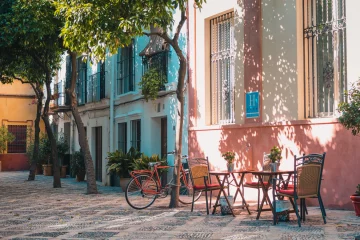Table of Contents
Germany
From the high Alps in the South, the Bavarian plain, and the flowing hills of central Germany to the coast of the North and Baltic Sea: it all looks like a miniature train landscape packed with the nicest of old towns, medieval houses, gothic churches and small villages.
Thanks to the different regional princedoms, earldoms, monarchies and states Germany did not unite until the last centuries. Thus Germany has not one but many major cities. And each city has its own unique character, formed by its history and the surrounding region. Each is a whole new world unto itself in which you will experience not only different architectural styles and art treasures but also a very distinctive lifestyle. Local traditions and mentalities are clearly reflected everywhere – in the arts, the nightlife, the shops, the pubs and restaurants and the way people work and live.
When to go to Germany
Germany is an excellent destination all year although its climate can be unpredictable. Most people prefer to visit it between May and September (high season) when the sunny days are most likely. A lot of activities are popular in this season, especially outdoor events (hiking, cycling and swimming) and festivals. Cold and wet weather should never be unpredicted in Germany, however: between one-third and one-half of the days each year brings some amount of precipitation. In June and July, school groups filled the major youth hostels, bringing noise and confusion.
The other seasons (from March to May and from October to early November) bring fewer tourists. Usually, in April and May the weather can be mild and sunny. On the other hand, between November and early March skies tend to be gloomy and the mercury often drops below freezing (there are only six or eight hours of daylight); in this season, travel to Germany is becoming more and more popular, especially to the ski areas in the Bavarian Alps. Keep in mind that rain is a possibility in any month, so try to be cautious. See German destinations in our travel guide.
Transports in Germany
Getting around Germany is incredibly easy. The train network is comfortable, reliable, fast and reasonably priced. The eastern and western train systems have now been fully merged. German roads are also excellent and motorized transport can be a great way to tour the country. However, almost all bigger cities suffer from a severe parking problem. The national and famous motorway network known as autobahnen, officially there is no general speed limit, but, in an attempt to increase safety and control the pollution, a lot of segments have speed limits. Another good and healthy way for getting around Germany is “cycling”. For the Germans, cycling is a fundamental part of life and many cities encourage cyclists with designated bicycle lanes, but cycling on the autobahnen is strictly forbidden (verboten).
Best of Germany
- The Rhine: In Germany, The Rhine has a spectacular beauty and it is a popular holiday destination. There you can find impressive places to visit like castles, cathedrals, vineyards and hiking trails. Its magnificent scenery inspired a lot of painters and poets.
- Trier: Trier is located in Mosel River Valley, is known as Germany’s oldest city. The City was one of the seats of the old Roman Empire, a proof of that is the amazing ruins’ architecture.
- Berchtesgaden: Berchtesgaden, with its beautiful scenery, is an attractive town to visit. The city is mostly visited in winter by its ski resorts on the edge of the Berchtesgaden National Park.
- Würzburg: Near from Frankfurt, Wüzburg is a vibrant university town surrounded by vineyards and full of architectural splendors.
Eating and Drinking in Germany
Usually, food in Germany is healthy and varies depending on the region or city; there are specialties with a good variety of seafood, poultry, vegetable, meat and cakes. There you can also find 300 kinds of bread, a number of specialty cheeses and many other tidbits. In the North meals are made with fish, in the South meals tend to be heavier, and in the East specialties are made grilling meat and they pile on the potatoes. Although many people think that the best and cheapest food in Germany is in the country’s inns.
Drinks in Germany have a high percentage of alcohol, and the country is one of the heaviest alcohol-drinking nations in Europe, just around 5% of Germans are teetotalers. The most popular drink around the country is beer, it is made in different ways and every German region has its own kind of beer, some are stronger than others. In Germany, beer is not recognized as “alcohol”, it is known as food. There are more than 5000 breweries that produce the beer, so the price is the lowest in Europe. Other popular drinks in Germany are wine, apple wine and drinks made with fruits.



0 comentarios